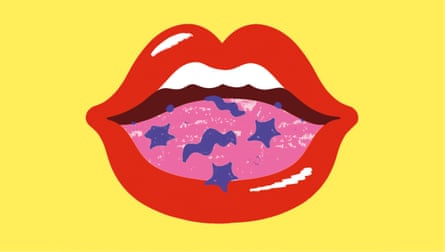One ordinary afternoon, I had an epiphany that changed my life.
Because of a stubborn case of pink-eye, I had visited the doctor. As I was leaving his office, he remarked: “Remember, because you’re so nearsighted, you’re more at risk of a detached retina, which could cause you to lose vision.”
I had never known about this danger. My eyes! As I walked home, I realised that it had been a long time since I had really looked at the New York City streetscape that I loved.
I turned a corner and, in a single moment, my senses seemed to awaken. It was as if every dial in my brain had turned to its maximum setting, so that I perceived every sight, sound and smell with perfect clarity. That transcendent, psychedelic walk to my apartment took only 20 minutes, but it reminded me of a profound truth: I had one body and its capacities as they stood – and I wouldn’t have them for ever.
For years, I had been reflecting on how we can build happier lives; I had written books such as The Happiness Project and I hosted the Happier with Gretchen Rubin podcast. But, despite this work, I had started to realise that I felt stuck in my head – disconnected from the world and other people, and also from myself. I knew that I could have a happy, complete life even if I lost some of my body’s capabilities; my fear was that I would regret everything that I had ignored.
That walk home showed me what I needed to do: connect with my senses.
I was surprised by just how effective this approach turned out to be. No matter what aim I was trying to achieve – whether I wanted to wake up, calm down, take delight, spark ideas, appreciate the moment or deepen my connections to other people – I found ways to harness my senses’ power.
One of the most useful things I did was to identify my “neglected” sense. Of the “big five” – seeing, hearing, smelling, tasting, touching – most of us have a few senses that we particularly appreciate and others that we neglect. With an “appreciated sense”, we pay attention, we are eager for new experiences, we are interested in learning, we swap recommendations, we reminisce. On the other hand, our neglected sense is the sense that we least often turn to for pleasure or comfort. We don’t spend much time exploring or cultivating it. We may be more concerned with avoiding the negative than appreciating the positive.
It is helpful to identify our neglected sense, because it offers us low-hanging fruit: fresh opportunities for adventure, comfort and enjoyment.
My own most neglected sense? Tasting.
Tasting
Enjoying our sense of taste with other people is one of the oldest human customs. What we eat, with whom we eat and how we eat are choices that tie us to our identity, our memories and our culture.
However, I neglected my sense of taste. So, in one experiment to harness its power – in particular, its power to bring people together – I invited some friends to join me for a “taste party”. We compared varieties of apples, crisps and chocolate bars. We considered the magic of ketchup: a rare item that combines the five basic tastes (sweet, sour, bitter, salty and umami). We discussed questions such as: “What junk food did you love as a child, but your parents would never buy?” and: “What taste did you once dislike that you now enjoy, or vice versa?” Sharing these experiences and memories got us laughing and talking.

To tap into your sense of taste:
Write a “tastes timeline” of your life. What food and drink do you associate with different periods? Revisit a family recipe, a restaurant or an ingredient that holds memories.
Invent an ice-cream, a sandwich, a pizza, a casserole or another dish.
Smell and taste combine to give us an item’s “flavour.” Without smell, we experience only the basic tastes. Test this phenomenon: plug your nose, put a jellybean in your mouth and taste plain “sweet”, then unplug your nose to get a complex hit of cherry, coconut or whatever it might be.
Seeing
My most ambitious experiment? I decided to visit the Metropolitan Museum of Art in New York every day for a year. (I recognise how extraordinarily fortunate I was to have the time and freedom to visit, and to live within walking distance of the Met.)
I have always been powerfully attracted to routine and repetition, but as I visited the Met each day I began to notice small details that I had overlooked. I learned more about the place, and myself, as it became more familiar. During these visits, I didn’t have rules or assignments; I just looked at whatever I wanted to see.
I am a very disciplined person and these visits gave me a feeling of recess. Research shows that breaks from mental effort help us to stay productive and creative, which is why insights often emerge during times when our minds roam freely – lying in bed, in the shower, during exercise. I often had my most creative ideas during these museum visits and I have continued to go every day.

I had assumed that my desire to visit the same place daily was unusual, but I have learned that many people share this habit, or are interested in starting it, with a daily visit to a park, through a neighbourhood, or even to a supermarket.
To tap into your sense of sight:
Look for what is overlooked: pharmacy shelves, book jackets, houses in your area. What details do you notice when you look closely?
To make it easier to put down your smartphone, switch your display to greyscale, so it appears in black, white and grey. Research shows this can make social media feeds and mobile games less appealing.
Find an inexpensive way to add a splash of colour: use a pen with an interesting shade; wear a bright colour; paint a cabinet; add a paperweight to your desk.
Hearing
As I studied our sense of hearing, I realised that, of all the listening we do, listening to people is among the most important. It may seem undemanding, but it is actually an active, taxing activity. To help me do a better job, I wrote a manifesto for listening:
Show my attention: turn my body to face the other person, put down my book, nod, make eye contact, say: “Mm-hmm,” take notes.
Don’t rush to fill a silence, but do ask clarifying questions.
Don’t jump in with suggestions.
READ RELATED: Babies are dying because of NHS failings, poverty and inequality, charities warn
Stow my phone. Research suggests that the mere presence of a phone makes people less inclined to start a meaningful conversation.
Listen for what is not being said.
Don’t avoid painful subjects.
Let people talk themselves into their solution, rather than supply mine.
When in doubt, stop talking.
Identifying specific actions to help me listen better dramatically heightened my sense of connection to the people I love.

To tap into your sense of sound:
Research – and experience – show that listening to a favourite upbeat song is an easy, quick way to change your mood, so create an “audio apothecary”. To cure the blues, for example, make a playlist of your favourite high-energy songs.
Attend a concert or try a sound bath. While it is wonderful to have so much recorded sound available to us, nothing can replace a live performance.
Improve your smartphone sounds. Choose a more pleasant alarm tone, assign a custom tone to people who are important to you, turn off unnecessary notifications.
Smelling
When I started my exploration of the senses, I often felt stuck in my head. I discovered that the sense of smell offers a particularly effective way to feel more present.
With a beautiful scent, we can’t bookmark it, rewind it, stockpile it or save it for later. Because of odour fatigue – by which a smell begins to fade as soon as we have processed it – we can’t experience a smell for more than a few moments. So, through the power of smell, we have the sense of being exactly where we are, at that moment, in our body.
We can indulge in beautiful smells without spending any money, time or energy – by taking a deep whiff of clean towels, vanilla, baked goods. These days, because many people prefer that others don’t wear scented products, I wear perfume to bed.
A scent ties me to the present by telling me what is happening right now: a friend just put on sunscreen; my husband cooked bacon. At the same time, a scent can transport me to my past. A bonfire always reminds me of summer camp, for example. Plus, scent surprises us. We can’t see it coming!
To tap into your sense of smell:
With one nostril plugged, then the other, take a sniff of a strong smell and compare how each nostril registers a slightly different impression.
Notice that, because of odour fatigue, you can’t smell your home the way a guest would smell it.
Grab a jar from your spice collection, open it and, without checking the label, give the contents a sniff. Can you identify it?
Touching
Our sense of touch plays a special role in our relationship with other people. Touch helps to lower stress, blood pressure and pain; boosts our immune system and mood; and helps us to sleep better. We benefit from many kinds of touch: a hug from a friend, a handshake from a colleague, a massage, holding a cat or a dog.
When exploring touch, I tapped into its power with my husband, Jamie. I made sure that each hug was a real embrace, not just a quick squeeze. When we walked our dog, I took Jamie’s hand or put my arm through his arm. When we needed to have a difficult conversation, I put my hand on Jamie’s back, or sat so that our knees touched. In fact, these days, whenever we start to argue, I take Jamie’s hand. It is hard to yell at someone while you are holding their hand.
I also found that I could use my sense of touch to feel less anxious. Just as children hug stuffed animals for comfort, I found that I could calm myself by holding a prop – in my case, a pen. When I am in a stressful situation, I hold a pen. I never write with it, but just holding it helps me to feel grounded. I have talked to other people who use props, such as a mug, a stone, a clipboard and a water bottle.
To tap into your sense of touch:
Search out interesting textures, such as tinfoil, sandpaper, sheepskin, sisal or cacti.
Visit a shop where you can touch the merchandise. Feel the solid heft of a hammer, or the smooth, light cotton of dishtowels.
Spark creativity by visiting a place that lets you get your hands on materials for creative, touch-based work: a farmers market, a hardware shop, a gardening centre, a flea market or an art-supply shop.
When we tune into our senses, we are more present in the moment and we also feel more connected to our memories. We feel calmer yet more energetic. We have more moments of fun, delight and awe. And, best of all, our senses can help us connect with those we love.
The exploration of the senses has transformed my life. Every day, I tap into their power to connect me to the people, places and ordinary moments that I want to experience and remember – and I will never take ketchup for granted again.
Life in Five Senses by Gretchen Rubin (John Murray Press, £14.99) is out now. To support the Guardian and the Observer, order your copy at guardianbookshop.com. Delivery charges may apply



